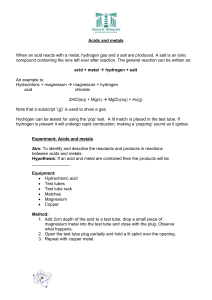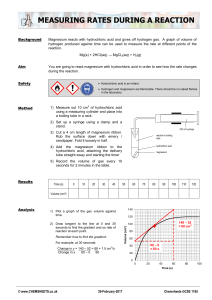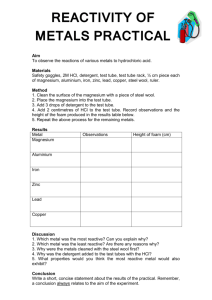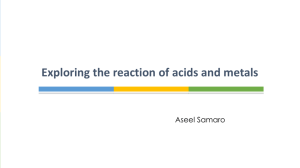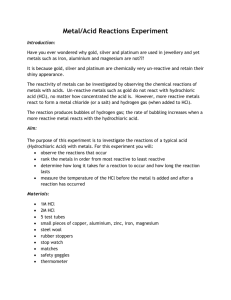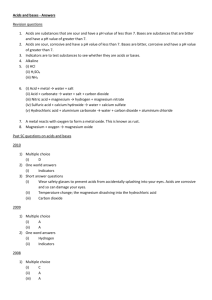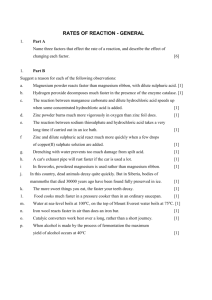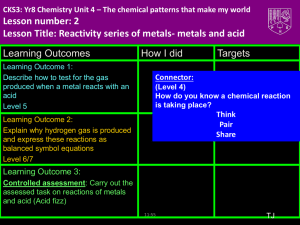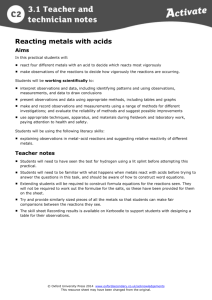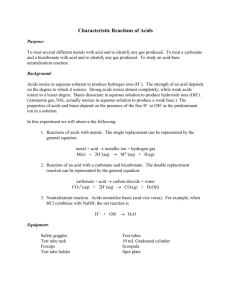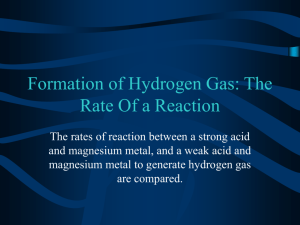Experiment: Acids and metals
advertisement
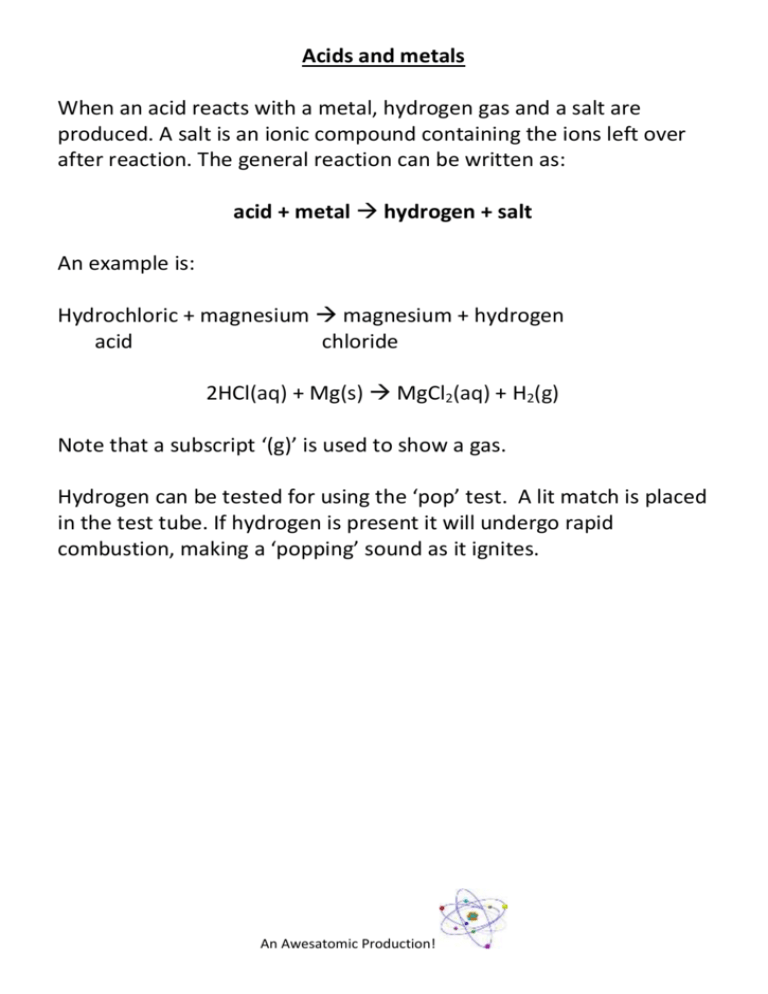
Acids and metals When an acid reacts with a metal, hydrogen gas and a salt are produced. A salt is an ionic compound containing the ions left over after reaction. The general reaction can be written as: acid + metal hydrogen + salt An example is: Hydrochloric + magnesium magnesium + hydrogen acid chloride 2HCl(aq) + Mg(s) MgCl2(aq) + H2(g) Note that a subscript ‘(g)’ is used to show a gas. Hydrogen can be tested for using the ‘pop’ test. A lit match is placed in the test tube. If hydrogen is present it will undergo rapid combustion, making a ‘popping’ sound as it ignites. An Awesatomic Production! Experiment: Acids and metals Aim: To identify and describe the reactants and products in reactions between acids and metals. Hypothesis: If an acid and metal are combined then the products will be ________________ Equipment: Hydrochloric acid Sulfuric acid Test tubes Test tube rack Rubber Stopper Matches Aluminium Magnesium Copper Tin Sandpaper Method: 1. Add 2cm depth of the acid to a test tube, drop a small piece of magnesium metal into the test tube and close with the plug. Observe what happens. 2. Open the test tube plug partially and hold a lit splint over the opening. 3. Repeat with the other acids and metals. NB: You will need to scratch the aluminium and copper with some sandpaper first to remove the outer coating. An Awesatomic Production! Results: Name and formula of Acid Name and symbol of Metal Observation Hydrochloric Acid Copper Hydrochloric Acid Magnesium Hydrochloric Acid Aluminium Hydrochloric Acid Tin Sulphuric Acid Copper Sulphuric Acid Magnesium Sulphuric Acid Aluminium Sulphuric Acid Tin Discussion: 1. Write word equations for each of the reactions between the acids and metals. 2. Write chemical equations for each of the reactions between the acids and metals 3. Identify the gas produced on each occasion. 4. Describe the test you would perform to identify the production of hydrogen during a chemical reaction 5. Write a word equation for the combustion (reaction with oxygen) of hydrogen. An Awesatomic Production!
